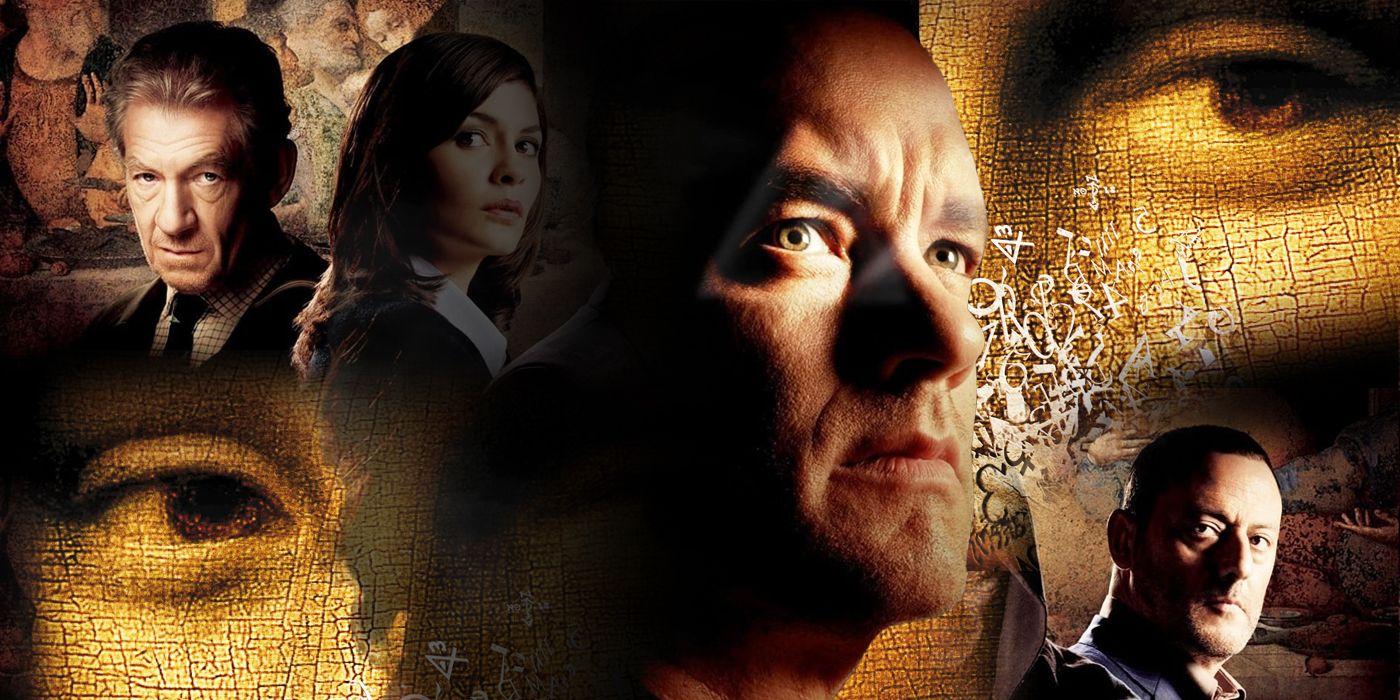The Da Vinci Code: Fact Vs. Fiction In Dan Brown's Bestseller

Table of Contents
Historical Figures and Their Portrayals in The Da Vinci Code
The Da Vinci Code presents controversial reinterpretations of several historical figures. The novel's fictional narrative often clashes dramatically with established historical evidence.
Mary Magdalene: Fact vs. Fiction
Mary Magdalene's role in early Christianity remains a subject of ongoing scholarly debate. While the Gospels mention her as a follower of Jesus, The Da Vinci Code portrays her as his wife and the ancestor of a bloodline protecting the secret of Jesus's marriage.
- Fact: The historical evidence regarding Mary Magdalene is limited and open to interpretation. Biblical accounts are sparse, and different theological viewpoints exist.
- Fiction: Brown's fictionalization elevates Mary Magdalene to a central figure in a grand conspiracy, significantly diverging from most mainstream interpretations of biblical texts.
Jesus Christ and His Lineage: Fact vs. Fiction
The Da Vinci Code controversially suggests that Jesus married Mary Magdalene and fathered a bloodline that continues to this day.
- Fact: The Gospels do not support the claim of Jesus's marriage or descendants. Historical evidence regarding Jesus's family life is virtually nonexistent.
- Fiction: The novel constructs a fictional narrative, weaving together speculation and conjecture to create a compelling but historically unsupported storyline.
The Priory of Sion: Fact vs. Fiction
The Priory of Sion, a real historical organization, plays a pivotal role in The Da Vinci Code, portrayed as a powerful secret society safeguarding the truth about Jesus's bloodline.
- Fact: The Priory of Sion existed, but its historical significance is far less dramatic than depicted in the novel. Its documented activities are largely unrelated to the events described in the book.
- Fiction: Brown dramatically exaggerates the Priory's influence and power, transforming it into a key player in a centuries-long conspiracy, a departure from its actual historical role.
Religious and Artistic Symbolism: Fact and Interpretation
The Da Vinci Code masterfully uses religious and artistic symbolism, blending historical facts with interpretations that often generate debate.
The Holy Grail: Fact vs. Fiction
The Holy Grail, a central motif in the novel, is open to multiple interpretations.
- Fact: The Holy Grail's true nature is ambiguous. It has been interpreted as a literal cup, a symbolic vessel representing spiritual purity, or even a metaphor for something entirely different. Many varying accounts are found in historical sources, ranging from medieval romances to religious texts.
- Fiction: The Da Vinci Code adopts a specific interpretation, using the Grail to represent the continuation of Jesus's bloodline, a unique and debated perspective.
Sacred Geometry and Art: Fact vs. Interpretation
The novel highlights the use of sacred geometry and symbolism in Renaissance art, claiming that Da Vinci and others encoded secret messages within their masterpieces.
- Fact: Renaissance artists often employed symbolism and geometric principles in their work, reflecting religious and philosophical beliefs prevalent at the time. However, the interpretation of these elements is subjective.
- Fiction: The Da Vinci Code presents a specific and often controversial interpretation of these symbols, suggesting hidden meanings not universally accepted within art historical scholarship.
Decoding Da Vinci's Art: Fact vs. Interpretation
Brown's interpretation of Da Vinci's paintings forms a crucial part of the novel’s narrative.
- Fact: Da Vinci’s work is rich with symbolism open to interpretation. Art historians have spent centuries studying and debating the meaning of his artwork.
- Fiction: The Da Vinci Code offers specific interpretations that often deviate from established art historical scholarship. While certain symbols hold historical and religious relevance, the novel’s interpretations often stretch beyond conventional academic analysis.
The Impact and Legacy of The Da Vinci Code
The Da Vinci Code's impact extends far beyond its literary success.
The Book's Popularity and Controversy
The Da Vinci Code achieved phenomenal global success, becoming a cultural phenomenon. However, its interpretations of religious history sparked significant controversy.
- Popularity: The book's engaging narrative and provocative themes catapulted it to the top of bestseller lists worldwide.
- Controversy: The book faced criticism from religious groups and individuals who viewed its portrayal of religious figures and events as historically inaccurate and disrespectful. Legal challenges ensued in several countries.
The Book's Influence on Popular Culture
The novel had a profound influence on popular culture, impacting tourism, historical studies, and the public’s perception of religious history and art.
- Tourism: Locations featured in the book experienced a surge in tourism, with many people eager to see the places mentioned in the narrative.
- Popular Interest: The book increased public interest in religious history, art history, and the life of Jesus, resulting in the increased publication of books and documentaries examining these subjects.
Conclusion: Separating Fact from Fiction in The Da Vinci Code
The Da Vinci Code masterfully blends historical fact with creative fiction. While it uses real historical figures and artistic symbols as a foundation, its narrative often takes significant liberties, interpreting facts in controversial ways. It's crucial to remember that separating historical fact from creative interpretation is vital when engaging with the novel’s claims. Don't take everything at face value!
Dive deeper into the historical mysteries surrounding The Da Vinci Code and form your own conclusions on the fascinating interplay of fact and fiction! Use credible sources to learn more about Mary Magdalene, Jesus's lineage, the Priory of Sion, the Holy Grail, and the symbolism in Da Vinci's artwork. This will allow you to develop a more nuanced understanding of the novel and its place within historical and artistic contexts.

Featured Posts
-
 Why Vegans Shouldnt Shy Away From Critiquing Halal Meat Production
May 13, 2025
Why Vegans Shouldnt Shy Away From Critiquing Halal Meat Production
May 13, 2025 -
 Karding Tegaskan Tak Ada Penempatan Pekerja Migran Di Kamboja Dan Myanmar
May 13, 2025
Karding Tegaskan Tak Ada Penempatan Pekerja Migran Di Kamboja Dan Myanmar
May 13, 2025 -
 Nba Tankathon More Than Just A Game For Miami Heat Fans
May 13, 2025
Nba Tankathon More Than Just A Game For Miami Heat Fans
May 13, 2025 -
 Active Seniors A Calendar Of Trips And Events
May 13, 2025
Active Seniors A Calendar Of Trips And Events
May 13, 2025 -
 Sabalenka Falls To Ostapenko In Stuttgart
May 13, 2025
Sabalenka Falls To Ostapenko In Stuttgart
May 13, 2025
